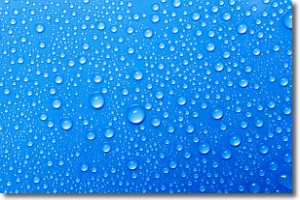Weather Alert in Washington
Red Flag Warning issued August 24 at 1:44PM PDT until August 26 at 9:00PM PDT by NWS Spokane WA
AREAS AFFECTED: East Washington Central Cascades; East Portion of North Cascades National Park / Lake Chelan National Recreation Area; East Washington North Cascades; Methow Valley
DESCRIPTION: ...HOT, DRY, AND UNSTABLE CONDITIONS FOR MONDAY AND TUESDAY ALONG WITH THE POTENTIAL FOR ISOLATED THUNDERSTORMS WITH GUSTY OUTFLOW WINDS... .Hot, dry, and unstable conditions are forecast along the East Slopes of the Central and Northern Cascades as well as the Methow Valley Monday and Tuesday. In addition, we are monitoring the potential for isolated thunderstorms on Monday and Tuesday afternoons that could result in new fire starts along with gusty outflow winds. The National Weather Service in Spokane has issued a Red Flag Warning for hot, dry, and unstable conditions, which is in effect from noon Monday to 9 PM PDT Tuesday. The Fire Weather Watch is no longer in effect. * Affected Area: East Washington Central Cascades (Zone 696), East Portion of North Cascades National Park/Lake Chelan National Recreation Area (Zone 697), East Washington North Cascades (Zone 698) and Methow Valley (Zone 704). * Winds: Southeast around 5 mph in the afternoon shifting to northwest in the evening, except gusty outflow winds near thunderstorms. * Timing: Afternoon and evening for both Monday and Tuesday. * Thunderstorms: A 5-10 percent chance of dry thunderstorms late Monday afternoon into the evening. A 20-25 percent chance of thunderstorms Tuesday afternoon and evening mainly over the higher terrain. * Relative Humidities: Below 4000 feet: 13 to 20 percent. Above 4000 feet: 20 to 30 percent. * Temperatures: Below 4000 feet: 90 to 102 degrees. Above 4000 feet: 75 to 90 degrees. * Impacts: Hot, dry, unstable conditions may lead to rapid fire growth on any new or existing fires. Isolated thunderstorms will bring the potential for new fire starts, as well as gusty outflow winds.
INSTRUCTION: A Red Flag Warning means that critical fire weather conditions are either occurring now....or will shortly. A combination of strong winds...low relative humidity...and warm temperatures can contribute to extreme fire behavior.
Want more detail? Get the Complete 7 Day and Night Detailed Forecast!
Current U.S. National Radar--Current
The Current National Weather Radar is shown below with a UTC Time (subtract 5 hours from UTC to get Eastern Time).

National Weather Forecast--Current
The Current National Weather Forecast and National Weather Map are shown below.

National Weather Forecast for Tomorrow
Tomorrow National Weather Forecast and Tomorrow National Weather Map are show below.

North America Water Vapor (Moisture)
This map shows recent moisture content over North America. Bright and colored areas show high moisture (ie, clouds); brown indicates very little moisture present; black indicates no moisture.

Weather Topic: What is Condensation?
Home - Education - Precipitation - Condensation
 Next Topic: Contrails
Next Topic: Contrails
Condensation is the process which creates clouds, and therefore
it is a crucial process in the water cycle.
Condensation is the change of matter from a state of gas into a state of liquid,
and it happens because water molecules release heat into the atmosphere and
become organized into a more closely packed structure, what we might see as
water droplets.
Water is always present in the air around us as a vapor, but it's too small for
us to see. When water undergoes the process of condensation it becomes organized
into visible water droplets. You've probably seen condensation happen before on the
surface of a cold drink!
Next Topic: Contrails
Weather Topic: What are Cumulonimbus Clouds?
Home - Education - Cloud Types - Cumulonimbus Clouds
 Next Topic: Cumulus Clouds
Next Topic: Cumulus Clouds
The final form taken by a growing cumulus cloud is the
cumulonimbus cloud, which is very tall and dense.
The tower of a cumulonimbus cloud can soar 23 km into the atmosphere, although
most commonly they stop growing at an altitude of 6 km.
Even small cumulonimbus clouds appear very large in comparison to other cloud types.
They can signal the approach of stormy weather, such as thunderstorms or blizzards.
Next Topic: Cumulus Clouds
Current conditions powered by WeatherAPI.com




